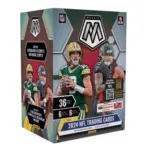This section compares his advanced stats with players at the same position. The bar represents the player’s percentile rank. The longer the bar, the better it is for the player.
Detailed
Grouped
Side
The bars represents the team’s percentile rank (based on QB Rating Against). The longer the bar, the better their pass defense is. The team and position group ratings only include players that are currently on the roster and not on injured reserve. The list of players in the table only includes defenders with at least 3 attempts against them.
@ Jaguars
Sunday, Dec 29th at 1:00PM
Overall QB Rating Against
92.6
Cornerbacks
93.4
Safeties
75.4
Linebackers
103.0
Pollard played as the 1B to Ezekiel Elliott for most of the last two years, but Elliott is gone and Ronald Jones is not a convincing 1:1 replacement. If Jones and Malik Davis are the next two runners on the Dallas depth chart then it would almost necessarily require an increased workload from Pollard, whose 193 carries, 55 targets and 543 snaps in 2022 were all career highs. With that said, Pollard probably can’t pick up more than a little of Elliott’s previous workload. At under 210 pounds and built somewhat thin at 6-feet tall, Pollard may not have the frame for big-time carry volume and has never previously been tasked with that type of role for more than a week or two at a time (dating back to high school). It might be best for his efficiency and durability to use him more like Alvin Kamara – a 12-carry, five-catch sort of back rather than the 20-carry, three-catch sort that Elliott was – but what’s clear in the meantime is that Pollard should have good efficiency with whatever level of usage he sees. He has seemingly turned a corner as a receiver, producing around or above 7.0 yards per target the last two years after hovering around 5.0 YPT his first two seasons, and at all points in his career Pollard has been explosive as a runner.
In his third NFL season, Pollard topped 1,000 scrimmage yards for the first time as his workload increased without negatively impacting his per-touch efficiency. The Memphis product is a big- play threat, showing elite burst and speed and above-average receiving skills, and despite being slightly undersized he’s proven he can gain yards between the tackles. Along with Seattle’s Rashaad Penny, Pollard was one of only two backs in the league last year to finish top five in both yards before contact per carry and yards after contact per carry, demonstrating he didn’t always need help from his offensive line to make an impact. That’s probably a good thing, as the Cowboys added new starters at left guard and right tackle this offseason to a unit that has seen better days (though it still has Tyron Smith at LT and Zack Martin at RG). Ezekiel Elliott remains the starter, with his contract guaranteed through this year, but he already appears on the downside of his career at 26. Pollard is on the final year of his rookie deal, and another big year on a per-touch basis — perhaps with another bump in volume as well — should line him up for a big payday next offseason.
Heading into his third NFL campaign, Pollard remains at the top of the ‘What If?” list among running backs. As the backup to a workhorse like Ezekiel Elliott, Pollard’s only chances for big performances come when Zeke is banged up or the Cowboys are blowing out the opposition, and there were no such opportunities in the latter category in 2020. Pollard did start Week 15 against the 49ers with Elliott on the sidelines though, and he turned just 18 touches into 132 scrimmage yards and two touchdowns. The Memphis product has breakaway speed in the open field while flashing the toughness and burst necessary to gain yards between the tackles. He’s also proven to be more than adequate as a pass catcher, and while he came into the league as a liability in pass protection, Pollard has shown enough improvement in that area to earn the trust of the coaching staff and see some work on third downs. Elliott’s massive contract, and accompanying cap hit, probably lock him into the top spot on the depth chart through 2022. Barring a serious injury to Elliott, Pollard may have to make do with single-digit touches most weeks, despite his clear upside should he ever secure the lead role.
Selected in the fourth round of last year’s draft, Pollard wasn’t expected to be much more than a gadget player while stuck behind Ezekiel Elliott. The rookie quickly proved he could make a big impact when he got the chance, erupting for 128 yards and a touchdown on only 16 touches Week 3 against the Dolphins. He later topped that performance Week 15 against the Rams, piling up 143 yards and a score on 14 touches. Those two games accounted for more than half his rushing yards for the season, however, as he saw six touches or fewer in half of the Cowboys’ games. Pollard’s blend of speed, elusiveness and surprising power made him tough to bring down, and among backs who got at least 80 carries last season, he led the league with 3.6 yards per carry after contact. He also flashed some ability as a receiver, increasing the ways in which offensive coordinator Kellen Moore could get him involved. As long as Elliott is healthy, Pollard doesn’t figure to take many carries, but the second-year pro is at least capable of efficient production when game flow works in his favor.
Selected in the fourth round out of Memphis, Pollard ran a 4.3 40-yard dash at his pro day and has a golden opportunity to win the No. 2 RB job in Dallas given the lack of an established backup behind Ezekiel Elliott, who is holding out for a new contract. Pollard’s college resume suggests he’s a better fit as a return man and gadget player than a full-time running back, however, and he may be a bigger threat to Tavon Austin’s roster spot than a true handcuff for Zeke. Still, if he shows his big-play potential in the preseason, new offensive coordinator Kellen Moore may try to find ways to get the ball in his hands.


